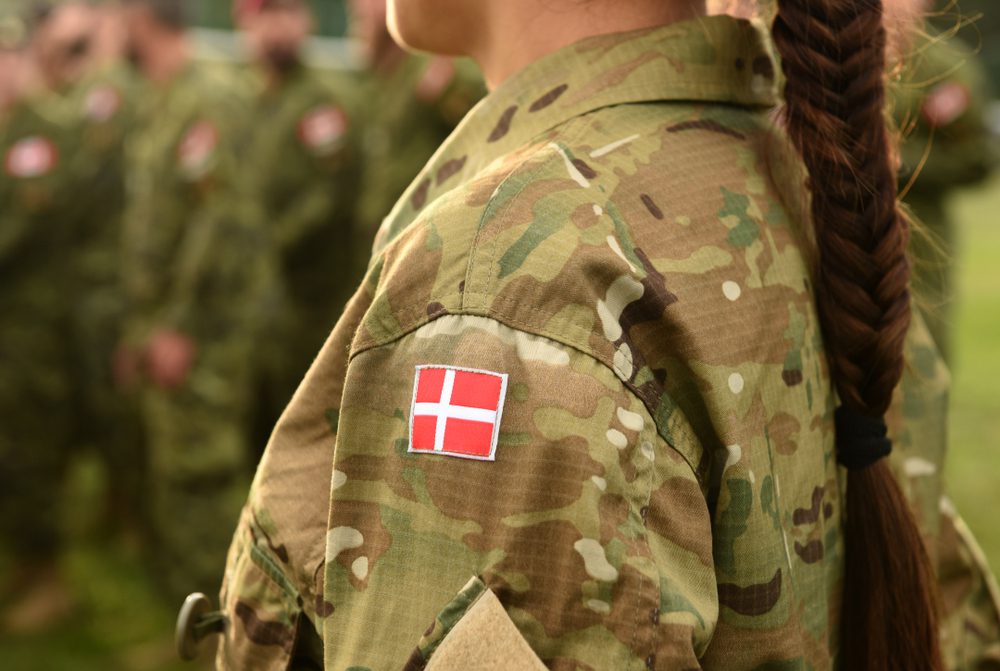
Strapped for enough volunteer soldiers, Denmark is advocating female conscription. The Nordic country has long struggled to meet its NATO requirements—which, with an eye to an escalation of the NATO-backed Russo-Ukrainian war, includes an urging for Denmarkf to increase the size of its armed forces.
In an interview with broadcaster TV2 on Wednesday, January 25, defense minister Jakob Ellemann-Jensen stressed that the current number serving in the Danish defense forces is not enough for the task assigned. “If we are to be able to strengthen our defense, we must have a basis from which to strengthen it,” he warned.
Addressing the shortage in the defense forces by conscripting women would not only help a great deal but would also in general be “beneficial” for the military, Ellemann-Jensen added.
The 49-year-old defense minister, who also serves as deputy prime minister and is the leader of the conservative-liberal Venstre party, noted that while public and private companies have the luxury of drawing employees from elsewhere, the Ministry of Defense does not.
The new measure has received support from several women’s organizations, Bloomberg reports.
Under Denmark’s current system, women can join the army voluntarily while men—should their name be drawn from a lottery—are required to serve. While Danish law allows the armed forces to mandate military service, only 1% of the Danish armed forces are conscripted in this manner. Approximately 4,500 Danish recruits receive military training in the army, navy, and air force every year. For most, their term of service is four months, but in some branches, service lasts 8 or 12 months.
Worldwide, only ten countries are currently known to conscript both men and women. In Europe, only two countries allow it.
Citing gender equality, in 2013, Norway was the first NATO country to introduce obligatory military service for women. As of 2021, 20% of its armed forces are composed of women employees, while women make up 34,5% of its conscripts. In addition, it boasts the world’s first all-female special forces unit.
In 2018, Sweden, while not a NATO member, followed suit in implementing conscription for women.
Israel, Myanmar, Eritrea, Libya, Malaysia, North Korea, Peru, and Tunisia complete the list of countries where women are conscripted, while lengths of service differ and exemptions are allowed. Other countries—among them Finland, Turkey, Lithuania, Singapore, and South Korea—have a males-only conscription system in which women are permitted to serve voluntarily.
According to Bloomberg, the defense minister’s announcement followed his office’s published conclusions of NATO’s bi-annual report. In it, the military alliance sharply criticized Denmark for having failed to invest enough in its military, mainly as it pertains to land and sea. Denmark sought to address the latter last summer by announcing a $55 billion investment in warships.
NATO had also specifically tasked Denmark with establishing a heavy infantry brigade by 2032. Delays—partly because of Denmark’s emptying of its arsenal to aid Ukraine—have however plagued the initiative.
NATO’s report came before Denmark’s last announcement concerning its defense spending, stating a planned increase of 4.5 billion kroner ($660 million). This would mean Denmark would reach 2% of its GDP (the threshold required, in theory, of all NATO members) in 2030— three years earlier than planned.
To this end, as previously reported by The European Conservative, the Danish government has proposed to sacrifice a Christian bank holiday.
Last week, after much debate Denmark finally agreed to donate its 19 French-made Caesar howitzer artillery systems to Ukraine, a system that the country had only recently acquired. The gift was then a bitter one, as it left Denmark’s own defense capabilities impaired, and in need of bolstering again. Elleman-Jensen said:
We must find a balance between helping Ukraine and continuing to strengthen the Danish defense so that we can safeguard Denmark’s security and live up to our obligations in NATO.
Denmark currently has no plans to follow its Western allies in tank deliveries to Ukraine. Its 44 tanks, 14 of which are stationed in the Baltic countries as a deterrent to Russia, are seeing to Denmark’s own defense—for now.
